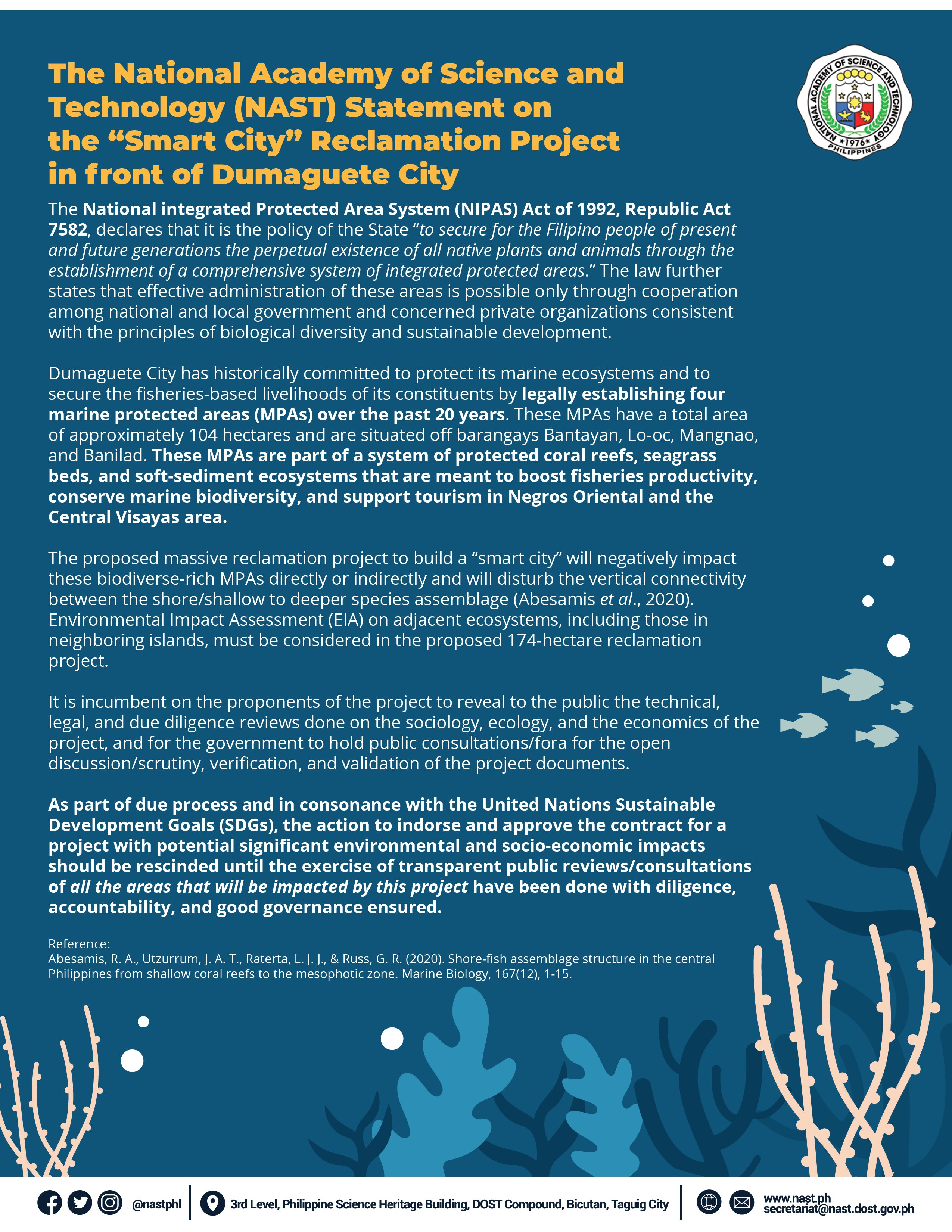The National integrated Protected Area System (NIPAS) Act of 1992, Republic Act 7582, declares that it is the policy of the State “to secure for the Filipino people of present and future generations the perpetual existence of all native plants and animals through the establishment of a comprehensive system of integrated protected areas.” The law further states that effective administration of these areas is possible only through cooperation among national and local government and concerned private organizations consistent with the principles of biological diversity and sustainable development.
Dumaguete City has historically committed to protect its marine ecosystems and to secure the fisheries-based livelihoods of its constituents by legally establishing four marine protected areas (MPAs) over the past 20 years. These MPAs have a total area of approximately 104 hectares and are situated off barangays Bantayan, Lo-oc, Mangnao, and Banilad. These MPAs are part of a system of protected coral reefs, seagrass beds, and soft-sediment ecosystems that are meant to boost fisheries productivity, conserve marine biodiversity, and support tourism in Negros Oriental and the Central Visayas area.
The proposed massive reclamation project to build a “smart city” will negatively impact these biodiverse-rich MPAs directly or indirectly and will disturb the vertical connectivity between the shore/shallow to deeper species assemblage (Abesamis et al., 2020). Environmental Impact Assessment (EIA) on adjacent ecosystems, including those in neighboring islands, must be considered in the proposed 174-hectare reclamation project.
It is incumbent on the proponents of the project to reveal to the public the technical, legal, and due diligence reviews done on the sociology, ecology, and the economics of the project, and for the government to hold public consultations/fora for the open discussion/scrutiny, verification, and validation of the project documents.
As part of due process and in consonance with the United Nations Sustainable Development Goals (SDGs), the action to indorse and approve the contract for a project with potential significant environmental and socio-economic impacts should be rescinded until the exercise of transparent public reviews/consultations of all the areas that will be impacted by this project have been done with diligence, accountability and good governance ensured.
Reference: Abesamis, R. A., Utzurrum, J. A. T., Raterta, L. J. J., & Russ, G. R. (2020). Shore-fish assemblage structure in the central Philippines from shallow coral reefs to the mesophotic zone. Marine Biology, 167(12), 1-15.

You may download NAST Statements on this link: https://nast.ph/index.php/publications?id=521











